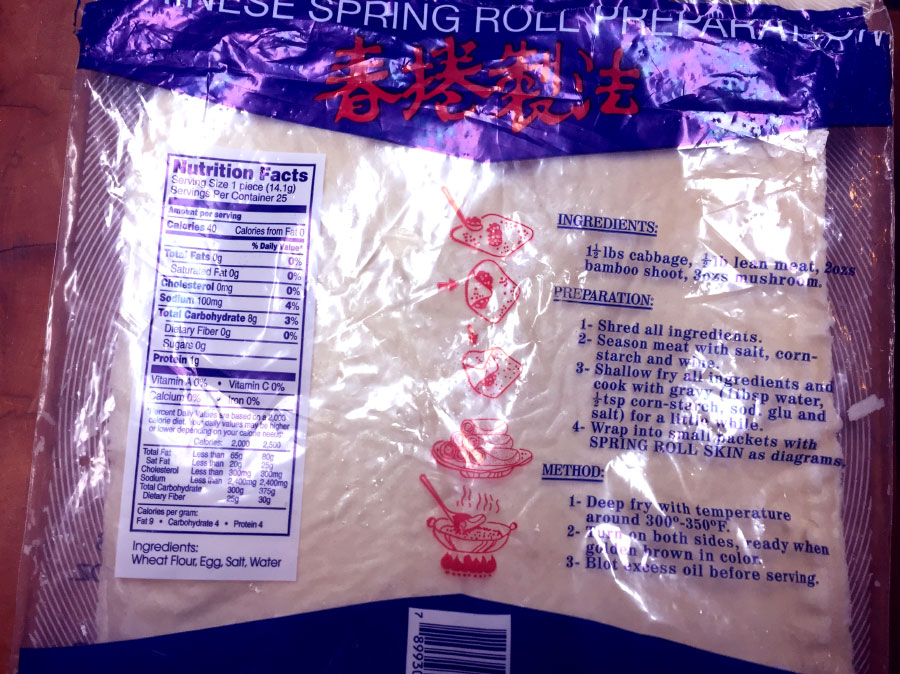
by Patrick Villanueva, Media Lab Assistant and Technology Instructor
12/12/2020
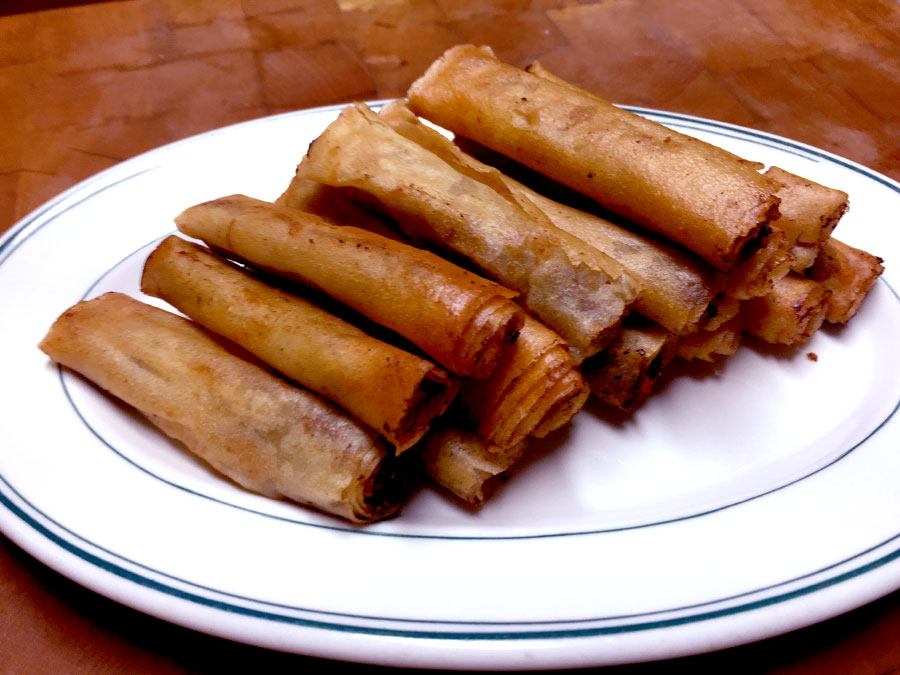
For the holiday season, I'm going to do something a little different. Today, I'd like to share a Filipino dish that is one of our most popular. Lumpia, pronounced "loom-pia," is basically our eggroll and often made in bigger batches. There are different kinds that I'm familiar with, but I'll feature the most classic of them all - Lumpia Shanghai. Technically a spring roll with a paper-thin wrapper, Lumpia Shanghai is filled with a ground meat mixture. It's the ultimate appetizer and a crowd favorite at social gatherings. Once served, don't be surprised to see them disappear quickly.
Some Notes About Filipino Food
Before getting to the recipe, I thought I'd add that celebrity chefs such as Andrew Zimmern and the late Anthony Bourdain have said that Filipino food is "next." I'll say it's good and to just give it a try, although I'm not sure where to begin. Others can capture its essence better than me, so I'll quote an article from Serious Eats:
"In restaurant circles, the dreaded F-word—fusion—is usually reserved to describe some sort of disparate multi-culti combination, like sauce soubise on top of tamales. But in the case of Filipino food, there's no stronger term to capture the essence of Asia's most unique, idiosyncratic, and underrated culinary tradition."
To cohesively describe the cuisine is a pretty good challenge, and I don't know how many times I've written and/or rewritten the following. In the end, I couldn't help but add them to a bulleted list:
- I've heard others describe Filipino food as a cross between Chinese and Spanish. Not exactly. There's some influence from American, Italian (see our Spaghetti) and others.
- Some popular dishes include Lumpia, Adobo (braised chicken or pork in soy sauce), Pancit (similar to Chinese Lo Mein), Kare-Kare (pot roast in a peanut sauce), Okoy (fritter), Pinakbet (vegetable medley), Bistek (sliced beef and onions), Arroz Caldo (our congee), Lechon (whole roast pig), Lechon Manok (roasted chicken), Sisig (spicy char-grilled pork), Tinola (deluxe chicken soup), Sinigang (a deluxe sour soup) and Dinuguan (blood sausage stew).
- Some ingredients that are more of a differentiating trait include vinegar, patis (fish sauce), bagoong (shrimp paste), calamansi (also known as calamondin), tamarind, ube (purple yam). Maybe coconut, too. I'm probably missing some other obvious ones, but that's off the top of my head.
- Like other Asian countries, white rice is a must. It's our bread or required carbohydrate.
- Meals are prepared more family-style. That means one big batch to share, which may include some side dishes and condiments.
- Proteins used in our dishes are pretty typical, although I'd say goat replaces lamb as an option. Pork is huge, with Lechon being one of the most celebrated. Fish also ranks pretty high, but debatable.
- Many dishes are more of a soup - called sabaw - as opposed to sauce.
- Flavors rely on pure ingredients, but shy away from the spicier side. As I've become more familiar with cooking, I've noticed there isn't nearly as much complex flavor development. That is, compared to Chinese, Italian or Mexican cuisines. Applied technique separates the great from good dishes, as anything else.
- Dishes with canned meats are valued and prepared well, especially SPAM and corned beef.
- Our desserts are plentiful. Fruits, vegetables (especially ube) and other starches are more involved than chocolate.
I could go on and on with more notes. It really is accurate to describe Filipino food as a fusion cuisine more than anything. Our iconic dessert is called Halo-Halo, translated as "mix-mix." It's delicious and contains a variety of ingredients. You wonder what's in it when first eating. But more importantly, it's just as symbolic and reflective of what Filipino food is. Anthony Bourdain sums it up pretty well in this clip from his show, Parts Unknown:
Lumpia Shanghai
Lumpia Shanghai are these delicately crispy rolls with a mixture of ground meat. It’s easy to make. You can use either ground beef or ground pork. More recipes call for the latter, maybe you'd want to combine them, but I've always associated this with ground beef. So, that's what I'll share.
Ingredients
|
A side note on the wrappers They're generally available at Asian markets, but not at typical groceries. Compared to wonton wrappers, they're much thinner and have more of a shattering crisp to them. Look for those made with wheat flour, as opposed to rice flour. It's also important to note the wrappers are pretty much stuck together inside the package, and it would be wise to take some time to separate each wrapper from another. They can be pretty fragile, so be careful not to tear them. This is the brand I used:
|
Instructions
- Prep the carrots and onions, first by removing their skins. You can finely chop each by hand, but using a food processor makes it easier. Just roughly chop them into bigger chunks prior to processing them. After a good number of pulses, you will eventually get a texture like the picture below. Each piece will be roughly the same, and that's what you want.
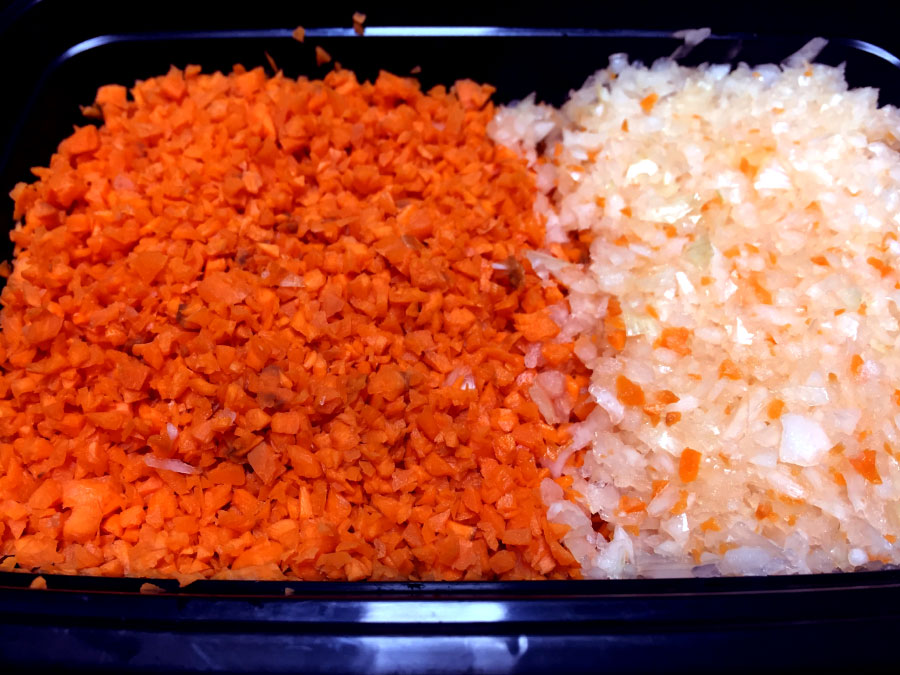
- Roughly chop the water chestnuts by hand. You could do these in the food processor also, but just keep them relatively larger to add some texture. You should have something like the following
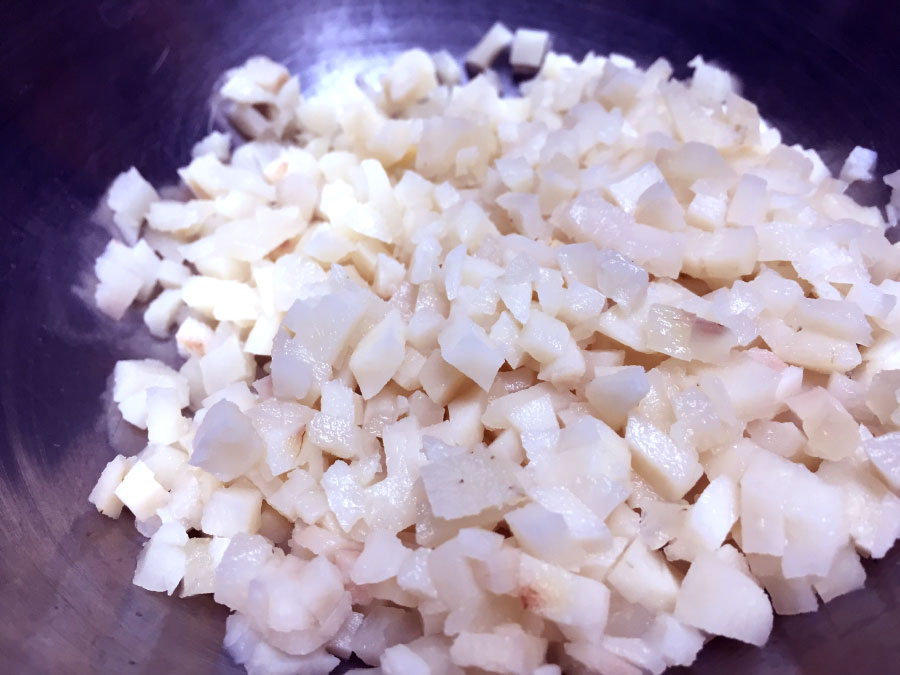
- Add the ground beef into a mixing bowl with the carrots, onions and water chestnuts. Add salt, pepper, garlic powder and an egg. It's best to just go in there with your hands and combine all the ingredients evenly. It will eventually look like this:

- Place a shallow frying pan or wok over medium heat, and add just enough oil for a shallow fry. I'm guessing the oil should be roughly 350F, but the oil should be hot enough for typical frying. Depending on the size of your pan, place a few Lumpia into the oil. Like any other recipe, it's best not to overcrowd the pan. Fry until golden brown. Place Lumpia into a large strainer, colander or wire rack with paper towels to drain excess oil and cool for a few minutes.
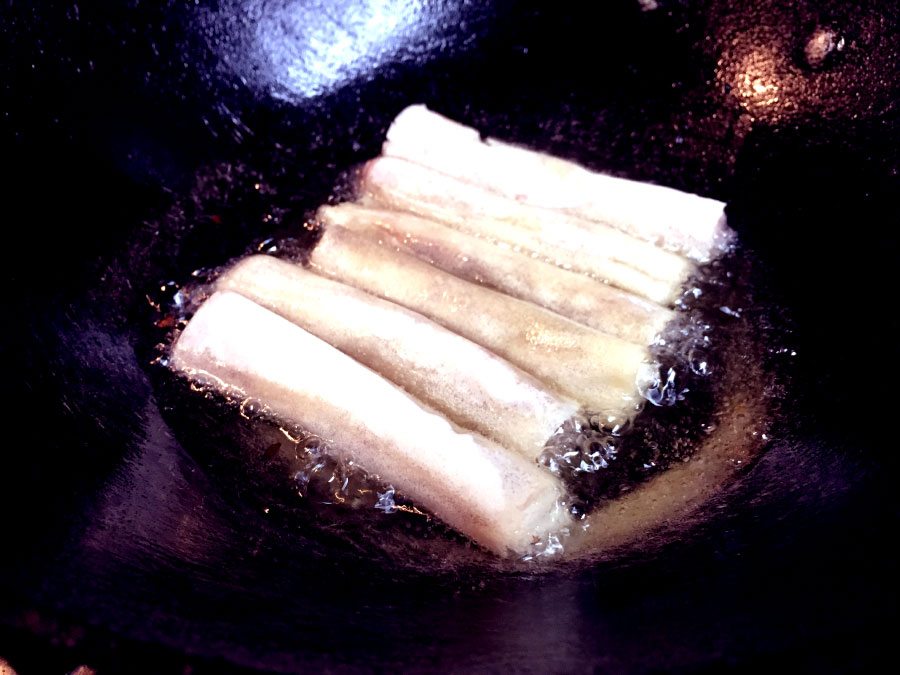
I hope you give this a try. You’ll see that it’s pretty easy to do and worth the effort. Served with sweet and sour sauce, it is pretty addicting.
Filipino Food Resource Links
For more information, you can check these out:
- Kusina De Manila: I'd recommend this restaurant in Niles for their food and ambience.
- Nic & Rei: A couple's YouTube channel teaching popular Filipino dishes with easy to follow instructions.
- Cook From Home: Follow my friend Sam's streaming channel where she learns how to cook by doing, many of which are Filipino.
- Richie's Food Stuff: My cousin's IG on food, where he takes on creative angles to our cuisine. Rich has many good tips and uses them to improve on traditional preparation.
If you have any questions, you can email me at MediaLab@lakeforestlibrary.org. And please feel free to make a virtual appointment with me or my colleague Kristin at lakeforestlibrary.org/medialab. We'd be happy to help with your digital needs.
Until next time, wishing you all a safe and happy holiday season. Happy New Year in advance, and I will see you all next year!
